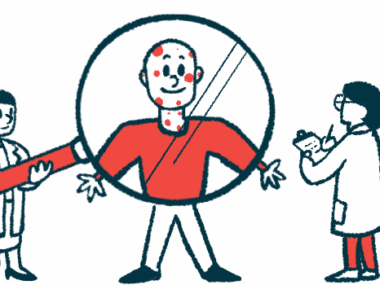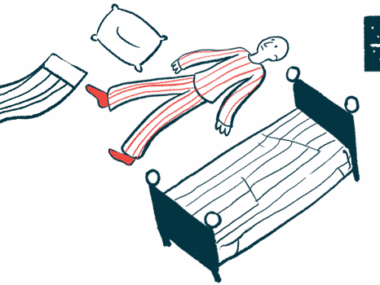CMT1 May Have Increased Boy’s Susceptibility to Rare Eye Palsy
Written by |

A boy who experienced oculomotor nerve palsy, a rare condition affecting a nerve that controls eye movements, was later diagnosed with Charcot-Marie-Tooth disease type 1 (CMT1), a case study reports.
Although the two conditions may have been coincidental, researchers noted the underlying nerve damage due to CMT may have made the oculomotor nerve more susceptible to disease.
The study, “Case Report: Oculomotor Palsy With Cyclic Spasms in a Patient With Charcot-Marie-Tooth Disease Type 1,” was published in the journal Frontiers in Ophthalmology.
CMT is a group of inherited conditions characterized by damage to peripheral nerves (neuropathy), part of the nervous system that controls movement and sensation in the arms and legs.
Mutations can lead directly to nerve cell damage or the loss of myelin that insulates nerve fibers, which impairs the transmission of nerve signals. As a result, people with the condition experience muscle weakness or a loss of sensation to pain, heat, or cold.
Oculomotor nerve palsy, also referred to as third nerve palsy, is a rare eye condition whose underlying biology is unknown. It is caused by damage to a nerve that supplies muscles controlling eye movements, making affected individuals unable to move their eyes normally.
In this report, scientists at University Hospital Zurich in Switzerland described the case of a young boy who developed oculomotor nerve palsy in infancy and eventually was diagnosed with CMT type 1, the most common form of CMT caused by a loss of myelin.
At 10 months of age, the boy developed the first signs of nerve impairment in his left eye, which slowly progressed until the age of 4. Five years later, the first repetitive (cyclic) spasms were seen, with each lasting about 20 seconds.
The spasms were characterized by contraction of the eye muscles, excessive shrinking of the pupil, and reflex action of the eye, normally used to focus. Before each spasm, the boy’s upper eyelid twitched involuntarily. When the boy was 15, the spasms continued to follow a similar pattern. Magnesium supplementation was ineffective.
The boy underwent Hess screen testing, a method to assess eye alignment in three dimensions, which confirmed he had oculomotor nerve palsy accompanied by mydriasis (pupil dilation). When his pupil shrank, the left eye would drift upward and inward.
Oculomotor palsy associated with drooping of the eyelids led to impaired vision in the boy by age 9. Occlusion therapy (covering the normal eye) partially corrected his left eye vision at age 15. Two MRI scans, one at 2 years of age and the other at 9, did not reveal any damage to the left oculomotor nerve.
At age 7, he was assessed for walking difficulties. Neurological examination showed a lack of tendon reflexes and diminished sensation to vibrations. Further tests demonstrated reduced signal conduction velocities in both sensory and motor nerves, indicating nerve damage due to a loss of myelin.
Assessments of family members showed his father and sister were also affected, and the drooping of one eyelid was reported in his paternal great-grandfather. The boy was otherwise in good health and attended high school.
Based on these tests, he was diagnosed with CMT type 1. Genetic analysis could not find the most frequent disease-related mutations and was not investigated further.
“Although a pure coincidence cannot be ruled out, it is conceivable that the underlying demyelinating neuropathy of this patient rendered the oculomotor nerve more susceptible to damage,” the investigators wrote.






